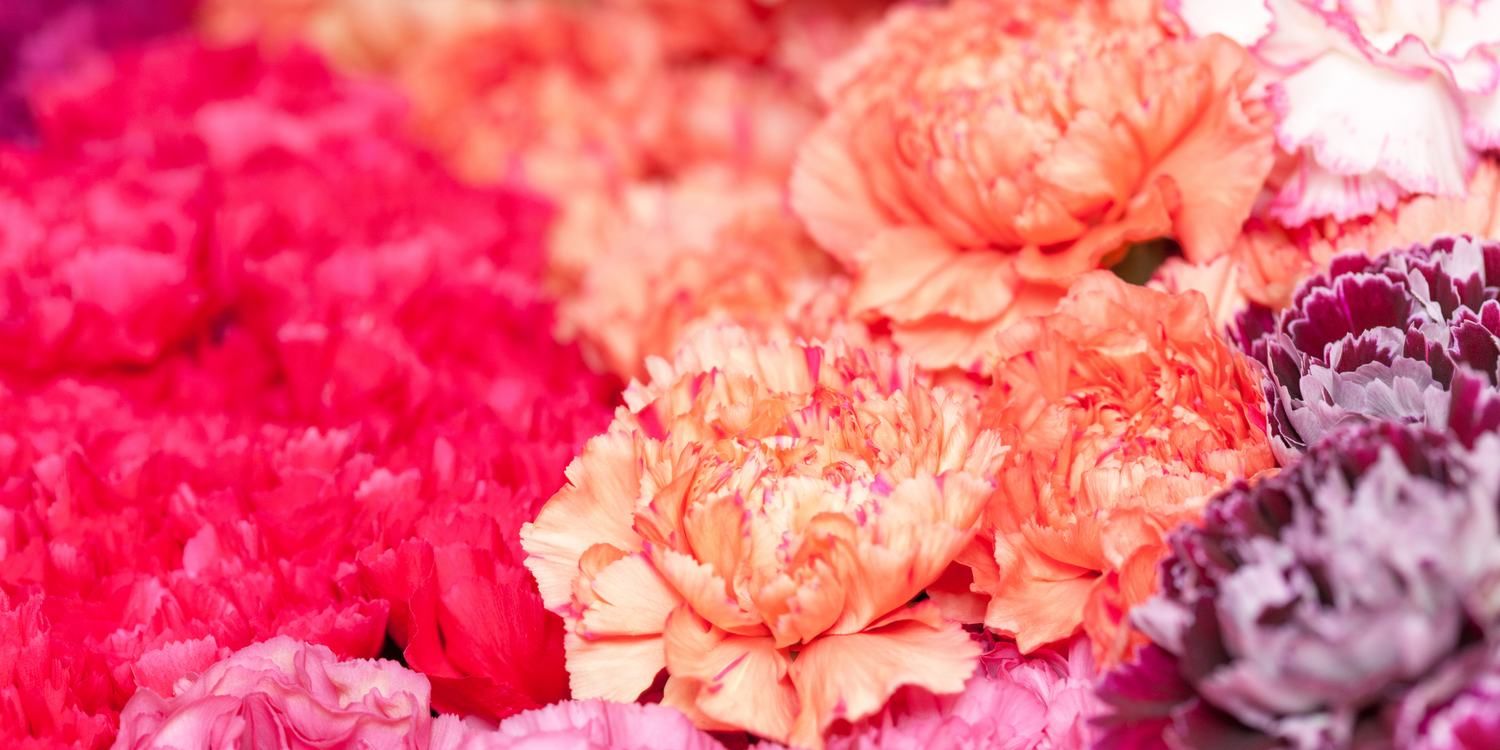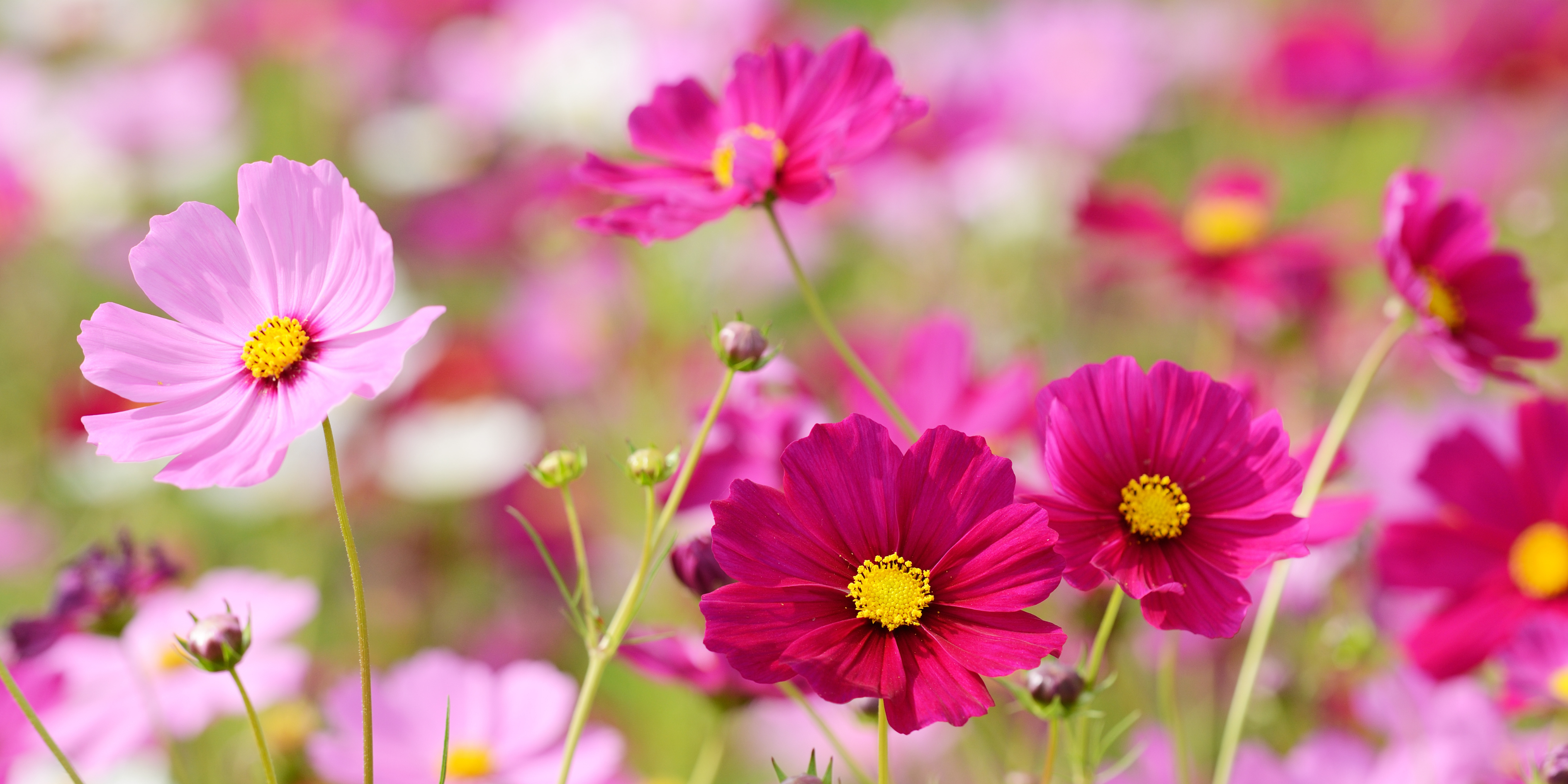Most of us have some idea about the various zodiac signs and birthstones. They help us understand who we are, how we relate to each other and how we respond to the world around us.
But far fewer people are familiar with the concept of birth flowers. Yep, each birth month has its own flower!
Birth flowers represent certain characteristics believed to be observed in people born in that particular month. The flowers carry special meanings and are often used to communicate messages to people in our lives.
We might be biased, but we believe having an understanding of birth flowers really takes a person’s gift-giving game to the next level. There’s just something special about receiving your very own birth flower on your birthday.
In this guide, we take a look at January birth flowers and their meanings.
Let's start by answering the question: what is January’s birth flower?
January babies actually have two flowers assigned to their birth month: the carnation and the snowdrop.
January Birth Flower #1: Carnations
We do so love carnations. These underrated blooms boast exquisitely ruffled, fringe-like petals, and carry a light, spicy fragrance. They make a great alternative to roses and peonies, and can last almost three weeks in a vase if properly cared for.
Fun fact: carnation flowers are also edible. Though we don't recommend eating them unless you know exactly where they came from...

Carnation Flower History
Carnations are native to the Mediterranean region, but are now a widely-cultivated flower. Historically, carnations grew on the sweeping hillsides of Greece.
There are a few different theories about how the carnation was given its name.
Some believe that Theophrastus, a Greek botanist, named the flower after the word ‘coronation’, because it was traditionally used in Greek ceremonial crowns. Others believe that the name originated from the Latin word carnis, which means flesh, because the first carnations were pink in colour.
The scientific name for carnations is dianthus caryophyllus; a real mouth-full!
Some people have posited that the word dianthus originated from the myth of Diana. As the mythology goes, Diana, goddess of the hunt, returned from an unsuccessful hunting trip when she came across a shepherd playing the flute. She blamed his music for her failed hunting. In a rage, she attacked him and plucked his eyes out. Where his eyes fell, red carnations grew, symbolising innocent blood.
Others believe dianthus was named after the Greek God Zeus, which is why carnations are also known as the flower of the gods. Zeus in Greek is dios and flower is anthos. Mesh the words together and what do you get? Dianthus.
Carnations were traditionally thought to have certain medicinal properties, too. They were traditionally used to treat fevers, coronary conditions, and nervous system disease in Europe.
The essential oils within carnations can be extracted and are still often used in aromatherapies and perfume products.

Carnation Flower Meanings
With the history of carnations under our belt, let’s look at what these wondrous little blooms symbolise.
Carnations actually carry a range of meanings that differ depending on their colour.
In their early conception, carnations were predominantly pale pink and peach, but today they arrive in a rainbow of colours: red, orange, yellow, white, purple, green, and even striped varieties!
Here’s what each colour represents:
When it comes to gifting someone a bouquet for their birthday (or throughout the year, just because!), don’t opt for just any flower. Gifting January-born loved ones carnations, their very own birth flower, makes the gesture all the more special and personal. It shows you’re thinking about them, and appreciating them for all the beautiful qualities they possess.
January Birth Flower #2: Snowdrops
Lovely and delicate snowdrops are among the first flowers to bloom at the end of winter and the beginning of spring. They belong to the Amaryllidaceae plant family, which also includes daffodils, agapanthus and onions.

Snowdrop Flower History
While they were first thought to be native to Britain, it has since been discovered that snowdrops are actually native to Europe and the Middle East, and were introduced to Britain by the Romans.
Snowdrops were given their name in 1753 by Swedish botanist Carl Linnaeus, who called the flowers galanthus nivalis, meaning ‘milk flower of the snow’.
Over the centuries, the snowdrop has been introduced into areas all over the world.
There are a few different folk tales and mythology stories about how the snowdrop flower came to be.
A Moldovan legend tells the story of a battle between Lady Spring and Winter Witch. At some point during the fight, Lady Spring cut her finger. The droplet of blood from the wound dripped into the snow, and from there a snowdrop flower bloomed. The pure white colour was seen to be a sign of Lady Spring’s victory over the Winter Witch.
German folklore tells a gentler story. At the beginning of time, snow searched for a colour to borrow. Snow admired the flowers and their various colours, and pleaded for one of the colours of the flowers.
All of the flowers denied snow a colour, deeming snow too cold and unpleasant. The snowdrop flower, however, felt sorry for the snow and offered up its colour. From then on, snow was white. As a gesture of thanks, snow allowed snowdrops to bloom at the end of winter, offering protection against the snow and ice. How cute is that!

Snowdrop Flower Meanings
While the snowdrop flower arrives in just the one colour, it still carries several meanings.
In the Victorian era, snowdrop was seen to be a sign of death and bad luck, as it was found at many cemeteries. Over time, its meaning evolved and it is now representative of sympathy and consolation, and commonly gifted during times of mourning.
Snowdrops, being white in colour, are also symbolic of innocence and purity. For this reason, they’re often gifted when a new baby is born.
Finally, they are seen to represent hope, as they bloom at the end of the dark, dreary European winter, right on the cusp of spring.
When you gift a January-baby a bunch of snowdrops, you’re communicating hope for them to enjoy a bright future ahead. This small yet meaningful gesture goes a long way in communicating your appreciation for them.
Australian Native January Birth Flower: Scholtzia
The traditional birth flowers are based on the seasons of the northern hemisphere. This often means certain birth flowers aren't in bloom in Australia in the month they're supposed to represent.
Snowdrops are the perfect example. These are winter bloomers, which aligns perfectly with January in the northern hemisphere. In Australia, though, this is the middle of summer.
Carnations, fortunately, are available practically all year long, thanks to greenhouse cultivation. You shouldn't have any troubles finding carnations to give to your January-born friends and family!

Another flower you shouldn't have much trouble finding at a florist in an Australian summer is scholtzia. Endemic to south-west WA, scholtzias make wonderful filler flowers in bouquets, and because they bloom in the summer we've named it our Australian native birth flower for January!
Scholtzia flowers are very similar in appearance to waxflowers, with five little petals in soft pink or white. They bloom from November into February, and last up to 12 days in a vase.
Birth Flowers for January
Keep these three January birth flowers and their meanings in mind when gift-shopping for a January-born loved one.
Top tip: as a thoughtful little addition to the blooms, add a card explaining the history and mythology of the birth flower, as well as what it represents!
At Floraly, we believe that the right bunch of blooms conveys everything that words can, and more. You can order your special birthday bouquet online today.
If you're interested in learning about birth flowers for other months of the year, check out our complete guide to birth flowers.



